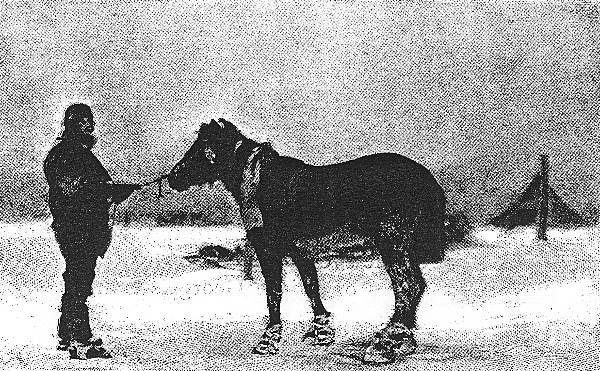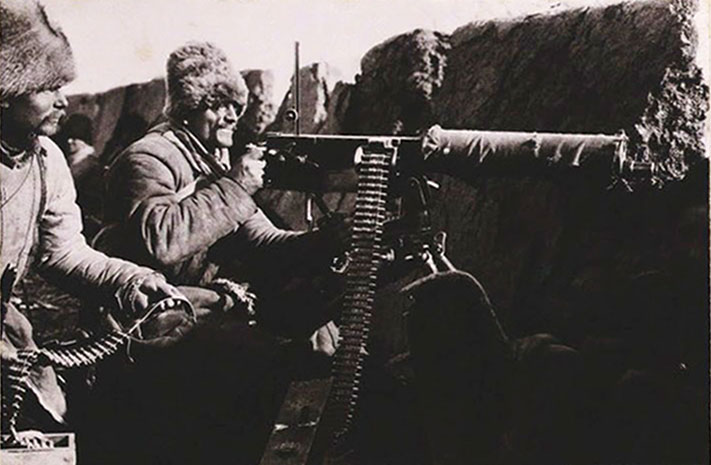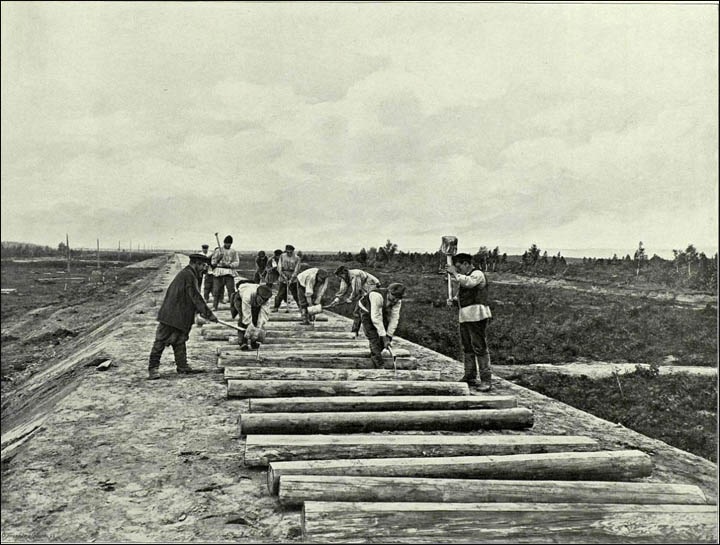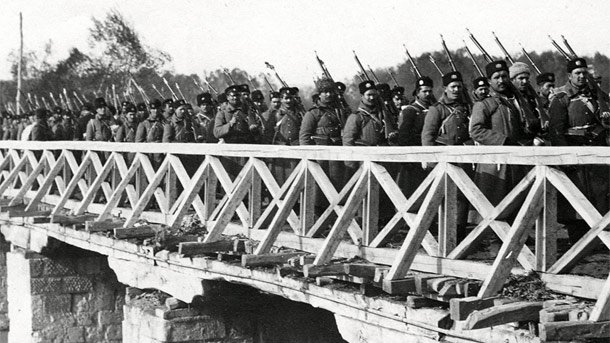 Novoye Vremya - New Times - July 1st, 1900
Novoye Vremya - New Times - July 1st, 1900Illustrated Special Edition: The Ottoman War
 The Tsar inspects the veterans of the Life-Guards Semyonovsky Regiment, and Serbian soldiers, in Constantinople
The Tsar inspects the veterans of the Life-Guards Semyonovsky Regiment, and Serbian soldiers, in Constantinople
From the the Baltic provinces to the Manchurian steppe, the Russian Empire continues to rejoice at the spectacular victories won by the Empire and her allies in the Ottoman War. From the youngest colonies on the Central Asian frontier, to the oldest and mightiest cities of European Russia, all are united in devotion to the Tsar and his armies, as Constantinople is finally liberated from the Turk. Churches and cathedrals have never before been so full, as hymn singing and general thanksgiving spills out onto the streets. From the Atlantic to the Aegean, Europe rejoices.
The Thracian Campaign of 1899-1900 is the climax of the Holy Mission of the Russian and Slavic people, which began centuries ago with the fall of the city of Constantine to Mehmet's horde. Two Romes had fallen, but, thanks to the piety of all the Russias, a third - Moscow - stood fast through the ages. Now, as we enter the twentieth century, she has repaid her sister-city by liberating an ancient capital of the Christian world, and Slav armies have expelled the heathen Turk from Christian Europe.
The Imperial Army stands on the cusp of liberating too the trade and commerce of south-eastern Europe from the shackles of uncertain Turkish policy and instability. The benefits to maritime security for all Black Sea nations cannot be understated, and it may mark an end to serious naval rivalry in the Black Sea region. Yet the allied forces also stand on the cusp of liberating the Armenian people from the dangerous and oppressive Ottoman regime - which over the past twenty five years has led to the murder of thousands of Armenian civilians, in breach of international treaties and civilised conduct.
After the greatest victory for European civilisation in the region since the Relief of Vienna in 1683, the
Novoye Vremya looks at five key battles in the war over the past six months, up until the warmongering tyrant Abdul Hamid the Mad was captured by soldiers and sailors of the Slav alliance. We hope our readers shall find the tales of the bravery of all soldiers and sailors therein as inspiring role models in the building of the peace and prosperity we now must strive for.
March 30th: Battle of Adrianople
 A photo first published by this paper, that has come to symbolise pan-Slav unity in the war. Russian, Bulgarian and Serbian troops pose together following the capture of Adrianople.
A photo first published by this paper, that has come to symbolise pan-Slav unity in the war. Russian, Bulgarian and Serbian troops pose together following the capture of Adrianople.
After the lightning advances of the Russian and Bulgarian armies into Thrace in the winter of 1899, and the simultaneous defeat of the Ottoman fleet in the Black Sea, battles between the Slav and Turkish forces continued throughout the end of the year. Having decisively defeated the sultan's crack troops in battle through the winter, Russo-Bulgarian troops began to encircle the fortress city of Adrianople. As supply lines became stretched by the cold weather and difficult terrain, this gave the Turk the chance to launch a notable - if ultimately foolhardy - offensive in March 1900.
Tens of thousands of young, inexperienced Ottoman conscripts were given barely operable rifles and sent into the bloody Battle of Adrianople, freshly drafted and little knowing the conditions they would face. Though initially making some headway, they were beaten back as the superiority of Slav morale, fighting elan, and technology told. The subsequent collapse of the Turkish army allowed the Slav armies, reinforced by crack Serbian units, to push all the way to the Straits and the defenses of Constantinople.
Adrianople itself is now finally back in Bulgar hands, to the joy of all Slavs. For who can forget the joyous sight of Bulgar, Serb, Montenegrin and Russian fighting side by side, and liberating an ancient city of emperors. If the battles of 1898 showed the superiority of Slav armies against the Ottomans, Adrianople was the true display of unity of purpose and spirit among the Slav combatants.
April 12th: Relief of Athens
 Turkish prisoners outside the Greek capital
Turkish prisoners outside the Greek capital
Yet the Slavs alone did not win this war - and indeed, some of the most bitter fighting of the war took place among the rocks of Hellas. Though in the initial and unexpected invasion Turkish troops seized Athens by the summer of 1899, later that year European powers were to intervene. An Italian amphibious landing was successful enough that the Italian flag flew alongside the Greek over the Parthenon. To the south in the Peloponnese, French and British armies had landed and begun to push the Turks back by midsummer. Yet one of the most controversial battles of the war came to pass out of what should have been a speedy advance by Greek, French and British troops north towards Athens.
Instead, Italian troops were subject to a harrowing siege for some weeks - bravely holding out while command and supply issues stopped the relief effort from getting underway. Despite superior Turk numbers and heavier artillery being available to the Ottomans, the Italians defended Athens with supreme courage. Though Western papers are filled with opinion columns on the subsequent fallout between Rome, Paris and London, few can deny that Italy's soldiers accorded themselves well in the fight. When France, Britain and Greece came to their relief - and the Serbo-Montenegrin advance from the north cut off any hope of Turkish retreat - the end of the Greek Campaign was a total victory for allied troops.
April 22nd: The Capture of Baghdad
 Persian troops, watched by Arab civilians, enter the city of Baghdad after routing the Ottoman garrison
Persian troops, watched by Arab civilians, enter the city of Baghdad after routing the Ottoman garrison
It was not in Europe alone that the war was won, however - with both the Caucasus Campaign, and the Mesopotamian Campaign, drawing valuable Turkish troops away from the Greek and Thracian front. Persia, with support from the Russian Empire, proved herself a valuable friend to the Allies - securing both Mosul and Basra by the new century. Just as the Armenian frontier ensured the Ottomans were unable to concentrate their forces in any one area, so too did the Shah's troops, supported by Russian advisors, pin down many Turk soldiers.
The capture of Baghdad represented a vindication of Persian diplomatic and military efforts to involve herself in the intervention against the Turk - who has in the past subjected Persia too to many humiliations. By the end of April, all of Mesopotamia had been taken by Persian units, with Russian officers present commenting on the swift disintegration of Ottoman resistance surrounding Baghdad, despite initial skirmishes.
May 3rd: Liberation of Salonika
 Bulgarian troops enter Salonika as the populace watch on.
Bulgarian troops enter Salonika as the populace watch on.
By May, the situation in the Thracian Theatre had turned into a full-scale rout of all remaining Turkish units outwith Constantinople, which came under siege. One other lone bastion which stood besieged for several days was to be Salonika. Strategically located on the Aegean Coast, it was to prove a valiant last stand for several regiments of the Ottoman Army. They could not stand against Slav might for long, however, as the Bulgarian Army entered the city on the 3rd, many of the city's ethnic Turks fleeing by sea to Anatolia as the city was liberated.
May 29th: Capture of Constantinople
 The city of Constantine, the second Rome, liberated at last as the Imperial Black Sea Fleet lies anchored.
The city of Constantine, the second Rome, liberated at last as the Imperial Black Sea Fleet lies anchored.
The final act in the Ottoman War however was to be the recapture of Constantinople from the House of Osman, and the delivering of the heir of Mehmet into Russian captivity as he fled across the Straits on a fishing skiff - only to be captured by the
Dvenadsat Apostolov.
Early May saw the arrival of Russian, Serbian and Bulgarian troops on the shores of the Sea of Marmara, the Turks fleeing before them. However, the rout was to be short lived, as the Sultan rallied his troops by the whip, and the city settled in for several weeks of siege and bombardment. The Imperial Black Sea Fleet was to play a crucial role in destroying coastal batteries and bombarding fortifications ashore; several units pioneered landing via torpedo boat to sabotage communications and supplies as the noose tightened on the city the Turk thought his by right of conquest.
On the 19th of May, Cossack cavalry began the assault itself, taking the final Turkish fortified line outside the city - a bare collection of trenches and wooden barriers. What followed was a week of house-to-house fighting, but the outcome was never in doubt so long as Turk reinforcements were an impossibility.
Few Slavs will ever forget the united army of our race driving the Ottomans into the sea. Nor shall any Slav forget the name of the
Dvenadsat Apostolov - the vessel which, by chance and fortuitous planning, was to seize a skiff that fled the city on the 29th, as the last Ottoman soldiers abandoned their posts and surrendered. Aboard was none other than the Sultan himself - and the tale of his humiliation carries far and wide the prestige of the Russian Empire, the Slav people, and the united realms of Russia, Bulgaria, Serbia and Montenegro. The Tsar Nicholas II shall surely be remembered as he who fulfilled the destiny of Russia, in bringing the dreams of Peter, Catherine, and all the Tsars to fruition in union with our Slavic brothers.
Боже, Царя храни!
































